No one buying from your website? Here are 8 reliable ways to increase online sales.
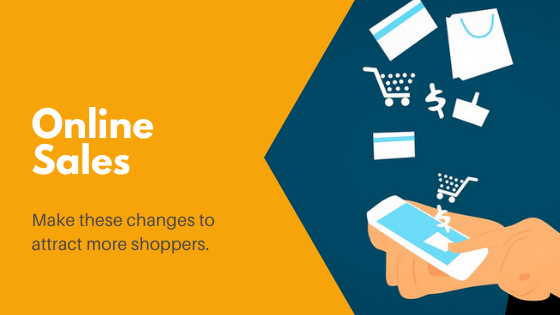
How do you attract customers to buy your product online?
Whether you’re new to small business e-commerce or have been running an online store for quite some time, chances are you’re constantly thinking about how to increase online sales.
Clearly, building your online store was the easy part. Converting visitors into paying customers though, well, that’s the real challenge.
In fact, do any of these scenarios sound familiar?
- Consumers make it all the way to your website but they don’t venture past the initial landing page. They come and go without having done much at all.
- Your website gets decent traffic and you see that those visitors click through to product pages or even straight to the online store. But then they just leave.
- Users get so far as to add items to their shopping cart only to abandon it in the end. In other words, they don’t complete the purchase process.
Given all the hard work put into setting up your small business’ online store, encountering such scenarios can be incredibly frustrating. It leaves you wondering: Why is no one buying from my website?
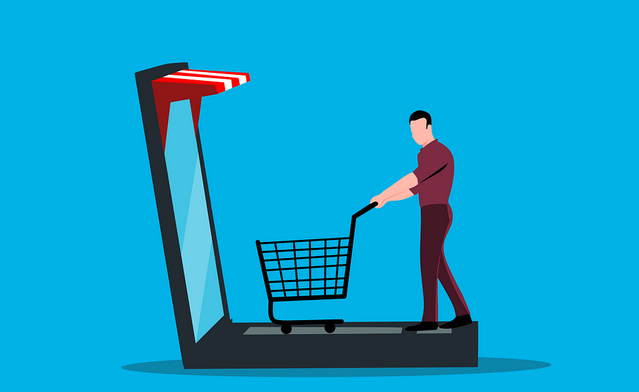
These are the online shopping statistics you need to know
To get to the root of the no-online-sales problem, you first need to go back to the basics.
More specifically:
- Why do people choose to shop online?
- Why do shoppers choose certain websites / online stores over others?
- What kind of benefits exist at brick-and-mortar stores and can you replicate them online?
The following online shopping statistics will shed some light on those questions. They should also help you decipher what you’re doing wrong (or what you could be doing better). From there, you can troubleshoot your way into improving your online store experience. I’ve also included 7 reliable ways to increase online sales for small businesses.
Reasons to shop online
Here’s what a 2017 report found:
- 58% appreciate the flexibility of digital commerce – they can shop all the time, any time (24/7) without worrying about store hours
- 54% prefer to shop online because of the ability to compare prices
- 46% shop online because there are better prices or online sales
- 40% choose to shop online because it saves time
- 39% shop online because it’s convenient – they don’t have to go out to get what they need
- 29% say online stores offer greater variety or a wider selection of items to choose from
- 29% choose online because of free shipping offers
- 27% appreciate the convenience of having everything in one place
- 20% shop online because an item is hard to find offline
- 15% buy online because of product availability, i.e. the product(s) aren’t available in the their city / country
- 11% choose online shopping because it allows them to skip checkout lines
How do customers choose where to shop online?
If you want to know why shoppers aren’t buying from your website, then it makes sense to look into the factors behind why customers choose certain websites or online stores over others.
The same 2017 study mentioned above explored just that. Here are the key findings:
- 57% shop where they can find the lowest price
- 43% choose the store with enhanced delivery options
- 40% select a store because of an easy return policy
- 34% choose a store based on the available payment options
- 33% shop on websites where they can see product availability
- 26% choose stores that provide extra information about product ingredients / sources
- 23% seek a consistent and smooth shopping experience
- 21% select a store based on incentives or rewards programs
- 21% look for customized promotions
- 20% are interested in the option to purchase online and then pick up the item
- 16% go for limited time promotions
- 10% choose a store based on social media presence
Why do shoppers prefer in-store shopping over e-commerce?
On the flip side, some consumers prefer visiting actual stores for their retail needs. Here’s why:
- Close to 80% say they shop in-store because they can have the product they need or want immediately
- 65% prefer physical stores because there are no delivery fees to worry about
- 61% of shoppers choose in-store shopping because they can first try or see the item in person before purchasing it
Other reasons include wanting to support local businesses and because returns are less complicated at brick-and-mortar stores.
Interested in even more shopping statistics?
Then check out the following posts on similar topics:
🔵 Online shopping and consumer habits
🔵 Purchase behavior: The preferences of every generational cohort

8 ways to improve online sales (on your small business e-commerce website)
Here are a few proven ways to boost digital sales.
Tip #1: Build a beautiful and safe website
Right or wrong, the way a website looks influences our perception of that store. We ask ourselves: Is the website’s appearance an indication of product quality? Can I expect responsive customer support here? Also, perhaps most importantly, will the transaction even be secure?
In fact, a full 38% of shoppers leave a website if it looks unattractive. That’s a lot—and exactly why ensuring you build a pretty, but also safe, i.e. encrypted, website is one of the first steps you can take towards earning consumer trust and growing e-commerce sales!
To summarize, treat your digital storefront the way you would a physical store: With careful planning, customer-friendly design, tip-top security, and regular maintenance.
Tip #2: Invest in quality copy
Want to beat the competition? Then you’d better be prepared to put in the time, research, and effort into writing copy that sells—web pages, product descriptions, landing pages, and email campaigns!
You need to write high-impact copy purposefully-crafted for YOUR buyer segments that’s also optimized for search engines. It requires understanding the buyer journey, shopper pain points, and search intent. Equally, it’s about breaking down the barriers that stand between you and the sale.
Spoiler alert: Developing persuasive copy is not as simple as it sounds. Luckily, you always have the option to recruit the services of an expert copywriter.
Tip #3: Bring offline benefits online
As you saw above, over 60% of consumers want to see / touch / try on an item before buying it. Similarly, a large number of shoppers worry that products look different online versus in reality.
So how can you satisfy tactile inclinations online? Here are a few ideas:
- Add a detailed size chart with measurement guide
- Upload plenty of high quality photographs taken from various angles and with the option to zoom in
- Send a free sample so consumers can try before they buy
Tip #4: Make buying from you easy
Another great way to boost online sales is to get rid of complicated checkout processes. There’s a good reason for this: A good 23% of shoppers won’t stick around if you require them to create an account first!
That means you should strive to make buying from you as easy as 1-2-3. Namely, add to cart → enter payment and shipping details → confirm transaction.
Tip #5: Get rid of pesky hidden costs
No one likes surprises, especially those of the hidden-cost variety! In fact, 60% of all abandoned shopping carts can be traced back to unexpected costs like shipping, tax, customs and other fees.
In short, it’s better to be upfront about add-on fees rather than shock the shopper with a vastly different final amount upon checkout.
Below are a few examples of how to tackle extra fees transparently and with professionalism.
Inform shoppers about relevant delivery fees.
There are many ways to do this including addressing domestic and international shipping matters in your FAQ. Here’s an example of what that might look like:

Give shoppers the option to choose the type of shipping they want in terms of both speed and cost.
How can you convince more shoppers to complete the purchase process? Give them affordable delivery options.
If you only have one type of service (e.g. priority), then those who can’t afford that option will look elsewhere to purchase the same or a similar product. The same applies to speed of delivery. Some shoppers want to receive their items as soon as possible; others are flexible and don’t mind waiting a little bit longer as long as it costs less.

Show the final cost before checkout.
Put simply, don’t be sneaky about the final price. The price displayed on product pages should either already include relevant taxes or, if your country has different tax rates depending on province / state, give shoppers the ability to view an estimate of final costs before checkout. Here’s how both options look in practice:
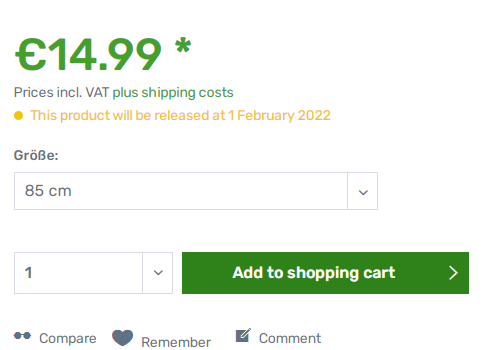
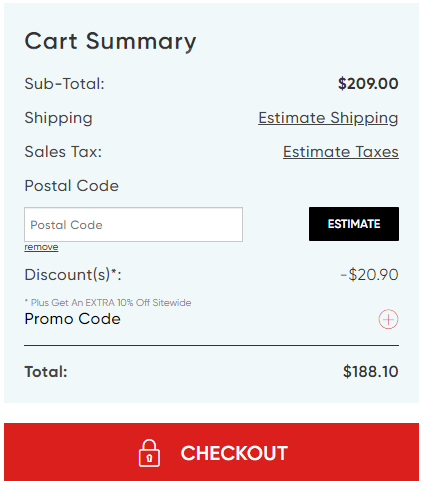
Let people know how they can qualify for free shipping.
43% of shoppers abandon their carts because of high shipping costs. At the same time, 24% of consumers are actually willing to spend more just to quality for free shipping. By the way, companies that offer free delivery enjoy a 20% higher conversion rate than those that don’t. The conclusion? You can increase your online store’s sales simply by gifting shoppers with free delivery—of course, they should meet a certain minimum spend to qualify!

If you ship internationally, let shoppers know about the possibility of additional fees on arrival.
If you want customers to shop with you again in the future, it’s also important you work hard to ensure a positive post-purchase experience. If you ship products internationally, it’s worth reminding shoppers that some international deliveries can incur customs fees and duties that the recipient has to cover. You want customers to be aware of this fact, so that they don’t complain about unexplained and unexpected costs.

Tip #6: Offer website-only perks to increase online sales
A great way to boost digital sales is by offering shoppers irresistible reasons to buy online to begin with.
For example:
- Online promotional and / or discount codes
- VIP access to new arrivals via the online store
- Website-only offers, bundles, or product sizes

Tip #7: Offer a variety of payment options
Aside from ensuring a safe online shopping environment, it also helps if your store accepts different payment options. That could be your standard credit card payment options, Paypal, bank transfer, cash on delivery, etc. Make sure the payment methods you accept are suitable for your region. For example: If you operate in Europe, you’ll be wise to accept Sofortüberweisung payments.
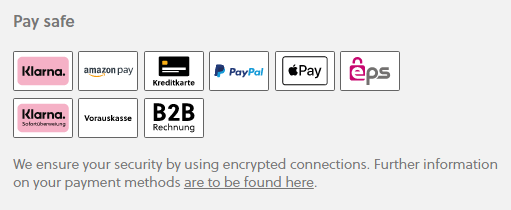
Tip #8: You need a good returns policy to increase online sales
A good returns policy is one that is clear and uncomplicated. And, from the customer’s perspective, ideally free. In fact, 79% of shoppers expect you to offer free return shipping!
You might think that your return policy isn’t a top priority but, unfortunately, that’s not the case. Here’s why: Over 60% of consumers will check an online store’s return policy first before they make a purchase.
But that’s not all.
If you want repeat shoppers, take note that a whopping 92% of shoppers say they’ll buy from the store again if making returns is an easy process. You can’t ignore those numbers!